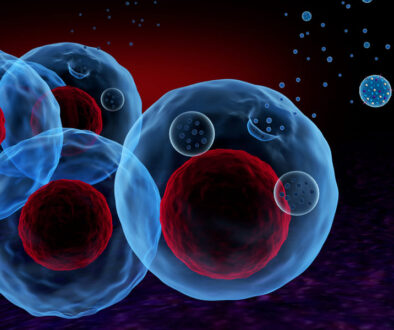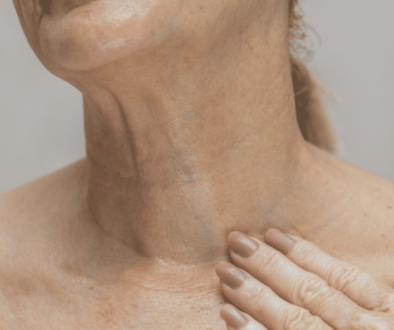Conquer Melasma with Cysteamine
Spotlight on Skin Pigment: Conquer Melasma with Cysteamine
Tired of those stubborn dark spots and uneven skin tone? You’re not alone! Melasma, a common skin condition, can be frustrating, but there’s hope. Let’s talk about Cysteamine, a skincare game-changer.
Melasma: The Persistent Pigmentation Challenge Melasma is a chronic skin condition causing brown patches, often on the face. It’s influenced by hormones, sun exposure, and genetics. While it can be managed, it requires ongoing care. Our goal is to achieve remission and maintain your skin’s radiance.
A Holistic Approach to Melasma Effectively treating melasma involves a combination of in-clinic procedures and a dedicated home care regimen. Our clinic offers a range of treatments including mesotherapy to rapidly block pigment production, lasers and specialized chemical peels to target existing pigmentation. These are complemented by a rigorous skincare routine utilizing synergistic ingredients.
Once melasma is in remission, consistent skincare is crucial to prevent relapse. While some depigmenting agents are highly effective, their long-term use can be limited.
Cysteamine: Your Skin’s Long-Term Ally Cysteamine cream is a standout treatment, gentle yet potent. It’s an excellent first-line option due to its tolerability and effectiveness. Beyond initial treatment, Cysteamine continues to be a valuable tool in preventing melasma recurrence.
Cysteamine: Your Skin’s Secret Weapon Cysteamine cream is a powerful yet gentle treatment that targets the root of the problem: melanin overproduction. It works by:
- Blocking the bad guys: Inhibiting tyrosinase, the enzyme responsible for melanin creation.
- Calming inflammation: Reducing oxidative stress, a key player in pigmentation.
Benefits that Wow:
- Dramatic results: Watch dark spots fade and your complexion even out.
- Kind to your skin: Cysteamine is generally well-tolerated, even for sensitive skin, making it an excellent first-line treatment.
- Long-lasting radiance: Suitable for ongoing use, helping maintain your skin’s clarity.
Cysteamine and Asian Skin: A Perfect Match Asian skin is often more prone to pigmentation. Cysteamine has shown promising results in addressing melasma in Asian patients due to its gentle yet effective nature.
Say Goodbye to Comparison While other treatments like hydroquinone and chemical peels exist, they can be harsh on the skin. Cysteamine offers a gentler, long-term solution without the risks.
Expected Results Imagine a brighter, more even skin tone. With consistent use, you’ll notice a visible difference in just weeks.
Is Cysteamine Right for You? Cysteamine is generally safe, but it’s essential to consult with our clinicians regarding its usage.
More about Cysteamine:
Indications
Cysteamine cream is indicated for:
- Melasma
- Post-inflammatory hyperpigmentation
- Lentigines (age spots)
- Other pigmentary disorders where excess melanin production is a concern
Benefits
- Effective Pigment Reduction: Cysteamine cream is effective in reducing hyperpigmentation and evening out skin tone.
- Non-Irritating: Compared to some other treatments, it is generally well-tolerated and less likely to cause irritation.
- Safe for Long-term Use: It can be used over extended periods, making it suitable for chronic conditions like melasma.
Expected Results
Patients can expect to see a reduction in pigmentation and an improvement in overall skin tone with consistent use. Visible results are typically observed after several weeks of regular application, with continued improvement over time.
Comparison of Cysteamine Cream with Other Melasma Treatments:
- Cysteamine Cream:
- Mode of Action: Reduces melanin production by inhibiting tyrosinase and reducing oxidative stress.
- Benefits: Generally well-tolerated, effective for long-term use, and suitable for sensitive skin.
- Limitations: Results may take several weeks to become visible.
- Hydroquinone:
- Mode of Action: Inhibits tyrosinase, reducing melanin production.
- Benefits: Considered a gold standard for melasma treatment due to its effectiveness.
- Limitations: Potential for skin irritation and ochronosis with long-term use.
- Azelaic Acid:
- -Mode of Action: Inhibits tyrosinase and has anti-inflammatory properties.
- Benefits: Suitable for sensitive skin and has additional acne-fighting properties.
- Limitations: May cause mild irritation or dryness.
- Kojic Acid:
- Mode of Action: Inhibits tyrosinase.
- Benefits: Natural alternative with fewer side effects.
- Limitations: Less potent compared to hydroquinone.
- Chemical Peels and Laser Treatments:
- Mode of Action: Exfoliate the skin or target pigment with light energy.
- Benefits: Can provide faster results.
- Limitations: Risk of irritation, post-inflammatory hyperpigmentation, and higher cost.
- They are not suitable for all skin types.
Potential Side Effects
- Mild irritation or redness
- Temporary burning or stinging sensation
- Dryness or peeling in some cases
Contraindications
- Known allergy to cysteamine or any component of the cream
- Use with caution in pregnant or breastfeeding women, as safety in these populations has not been fully established
Protocols for Use
- Application: Cysteamine cream is usually applied once daily, preferably in the evening. It should be left on the skin for about 15 minutes before washing off, although some protocols may vary.
- Duration: Treatment duration can vary based on the severity of the pigmentation and patient response. Long-term maintenance may be necessary for chronic conditions like melasma.
- Combination Therapy: It can be used in conjunction with other treatments such as sunscreen, antioxidants, and moisturizers to enhance results and protect the skin.
In summary, cysteamine cream is a valuable tool in the treatment of melasma and other pigment disorders, offering effective pigment reduction with a favorable safety profile.





